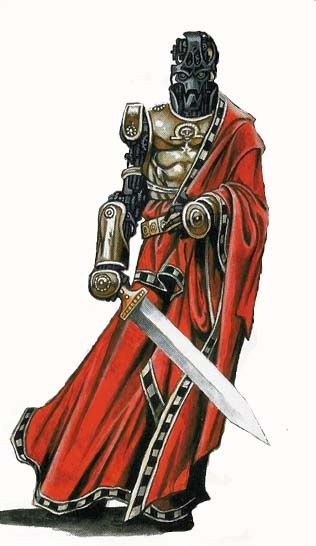When last we left our heroes, they were infected with
cholera and successfully stopped the Doomsday Clock from opening a Hellgate in Boston. Father Seward, Jake, and Rufina are all dead or missing.
It's pouring rain so hard a body can barely see, but one-by-one, the group reunites. Rufina crawls out of the ocean;
she's burnt, but she's fine. She finds Ruby in the rainstorm. They find David Hood. Eventually, they stumble into Jeb. They take shelter until the rain dies down a little.
The group determines that Jake is dead — dynamite — and that Father Seward was on the burning ship. Rufina swims a bit, but finds no evidence of the Father.
With no other options at the moment, the group decides to return to David Hood's parents' house. Despite reeking of ill shits and decomposing corpses, it's a home of sorts. Good enough until they move on.
They start to hear noise in the distance, noises of drums and activity. A knock at the door reveals a corporal who asks for an accounting of the house; David notes the survivors. During the conversation, the corporal indicates that someone is looking for them. An older, blind man with tousled hair greets them and feels their faces. He indicates they are the people he seeks, although a fifth should be with them. The corporal indicates a General Sully wishes to see them, and David Hood asks if they can freshen up and go to the docks to look for another of their party. The corporal, reluctantly, agrees.
Meanwhile, Father Seward awakens on a vast grassland overlooking a lake. On the other side of the lake stretches an enormous tree, stretching heavenward. He is compelled to walk toward the water. As he approaches, he sees several boats moving hither and thither. They are piloted by Dustmen, taking people to the island with the Tree. He climbs into a boat and the Dustman starts rowing. Ahead of him, he sees a boat containing Jake, also headed for the island.
He hears a splashing, followed by something climbing into the boat. This is followed by a much heavier splash. Whatever climbed into the boat curses Jake's foolishness, and turns the boat around. Father Seward can see the Dustman rower floating in the water.
As the boat returns to shore, Father Seward starts to regain control of his faculties. When the boat reaches the shore, out splashes none other than Cornelius Cobb, the man with purple gloves. Father Seward expresses surprise at seeing him — he's figured out he's dead and certainly didn't expect to see the former Satan. Cobb indicates that, as much as he'd love to let the Father die and move on to the afterlife, Father Seward has some information in his head that Cobb needs.
Cobb beckons him to follow.
Father Seward steps from the boat and goes to step into another boat. Before he can board, Cobb grabs him and starts dragging him into the grass. He indicates that Seward's returning to the land of the living whether he wants to or not.
He drags him over by an old cowpoke, and indicates that this man is going to ensure he gets what he wants. Cobb then reaches his fingers into Seward's breast and opens his ribcage, allowing the other man to climb inside. Before he disappears into the Father's chest, the man tells Seward to say hello to Henrietta, whomever that may be.
Father asks one final question: what did Cobb do with his daughter? Cobb says he sold her to him — gesturing to an American Indian shaman with a flayed head. Against his will, Seward pushes off the ground and starts trudging to the shaman. As he does so, he feels the sensation of dipping into water, and is fully submerged before he can reach the shaman.
It is dark when he awakens, and he is surrounded by water. There is some flailing and panic before he realizes that he does not have to breathe. He fumbles around until he finds an exit — he is in the burned wreckage of the riverboat's hull, and he is underwater. He starts walking toward land, and climbs up a rigging.
With the light, he can see himself — he is completely naked, and completely burned, like a singed corpse. He thinks, and returns underwater to the hull. He fumbles blindly until he finds the sword — he accidentally touches the edge, and it keens and burns — and then returns to land.
He starts moving from shop to shop looking for clothes. He finally finds a clothing store, breaks the window, and swipes oversized pants and an oversized shirt.
As he's walking out, a soldier is investigating the door.
The man raises his rifle and shouts, "Shit, it's a Negro, and he's armed!" Father Seward chides him for foolishness and then snaps at him for raising his rifle at a burned man. As the soldier stands, dumbfounded, Father Seward walks past him, then apologizes for snapping at him and says a quick blessing.
In the commotion, Father Seward is sighted by the group. Rufina jumps out to greet him, and so he is reunited with the others. He returns the sword to Rufina.
With the Army nearby, Seward says little, but implies that he's dead (Rufina seems to miss the subtlety), but he does take David Hood aside and reveals part of John Michael Patrick O'Flahertie's confession: the focus containing Bashiel's spirit, as well as some real estate papers from Seward and Taft, are all at City Hall. With this information, the group goads the Corporal into taking another detour from General Sully to City Hall.
Upon arrival, they find Bashiel, some Dustmen, and several knife-wielding babies loading things into a cart. With minimal Army presence, and still injured from the previous battle, the group decides to reluctantly let them go. For now.
The group goes to the Army encampment outside the town and is introduced to General Sully. After introductions are made and food is brought to them, General Sully indicates that he has something of the group. From Denver. He asks to address the leader, and when no one immediately speaks (Father Seward explains they typically just do things by committee), he chooses David Hood.
They walk outside and go around a cart to reveal a man in a tattered Union uniform. He is bound. Some discussion indicates that he is Rex O'Malley (of the same O'Malley clan as Detective O'Malley in St. Louis and Officer O'Malley in Boston), and that he is a dangerous man. Conversation suggests he has familiarity with the occult, and probably hunts the creatures of the night. David Hood accepts the man as his charge, and has him untied.
The trio returns to the tent. General Sully then indicates that they have been sought by the blind man who greeted them. A consultant with the United States government in things occult in strange, the man has predicted where the group is to go next. Apparently, the group is to travel to the small town of Buena Vista, Virginia and speak to a man in the local bar, who will tell them a tale of import. The man indicates they have been chosen for this life amongst strange and horrific things, and he is truly sorry for the group's burden.
General Sully gives the group an opportunity to tie up any loose ends regarding those they have lost. Father Seward indicates that Jake's next-of-kin have already been notified.
Finally, General Sully addresses Father Seward, saying that he has met those who have returned from beyond the grave. Many regret it. If he wishes, General Sully can execute him. Father Seward says he has to speak with his associates first.
Outside the tent, Father Seward addresses the group. Rex O'Malley says he will allow them to be alone, but the group pretty unanimously indicates that he'll have to know this stuff eventually if he's traveling with them, so he remains. Father Seward explains his time in the afterlife, and his experience with Cobb, his possession, and the reference to Henrietta. He says he can no longer be trusted, and intends to take General Sully's offer. When some argue, he says this is a democracy, so he'll put it to a vote. He'll abstain.
There is a pause, when finally Ruby puts in a vote for execution. Father Seward appreciates her honesty. After some dithering, Rufina follows suit. David thinks Father Seward is still useful and still a friend (and shouldn't commit suicide in such a manner), so he should be spared. Rex has little idea of what's happening, but more or less agrees with David. Jeb, after some thought, suggests that as all people are on Earth for a reason, perhaps Father Seward is still here for a reason.
Father Seward accepts the decision, although he warns them that he does not know what his rider shall force him to do in time.
The next few days are full of preparations. With Army resources at their disposal, the group outfits for the journey ahead of them. They also prepare to bury their dead.
*******************************************
This was a comparatively low-key session with a couple of
Shocking Swerves! Bashiel got away, Rufina survived, and Father Seward is Harrowed (basically a
revenant if you're unfamiliar with
Deadlands lore). And we're off to Virginia,
ostensibly to prepare food.
Arashi was pretty surprised to be the only person making a new character this session. And everybody looked at me with suspicion when I asked for Father Seward's chips (his fate was a surprise to everyone save me and the GM).
Also, as
Nicole was quick to point out, the vote for Father Seward was split amongst females and males — the women thought he should die, while the men did not (Jeb doesn't
quite count, as his player couldn't make it, so the GM made the decision on his behalf). Admittedly, I'm not sure that says anything about gender identity — it pretty much makes sense for the characters involved — but it was still an interesting thought that she had (and that I honestly didn't notice).
Next session should be pretty grueling and emotional, as it's time for eulogies. Father Seward should probably invest in a mask before then.


